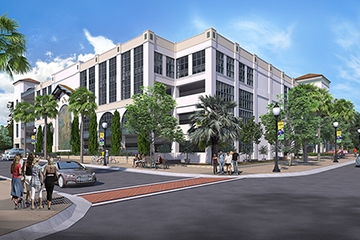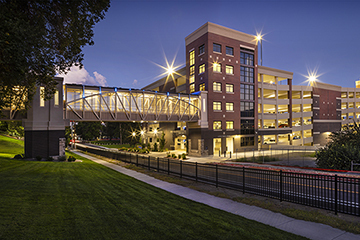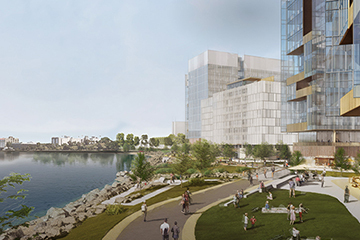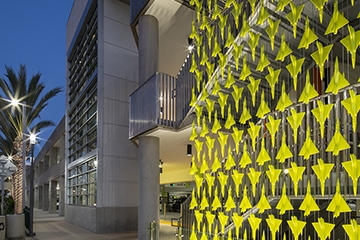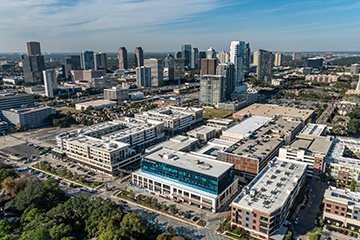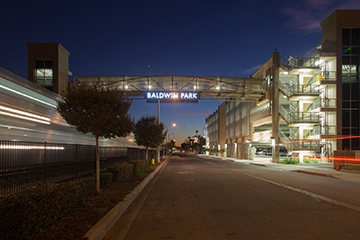Far too often, parking is left as a separate grey canvas versus a well-thought out, integral component that enhances the building or area it supports. However, parking can provide a number of unique opportunities to surprise, delight and elevate in unexpected ways. From artistic statements to creative interactions to embracing its surroundings, the possibilities are endless and the sky is the limit – literally, in some cases.
Let’s look at six ways parking can deliver on the unexpected, and how various owners have capitalized on opportunities to go that extra mile.
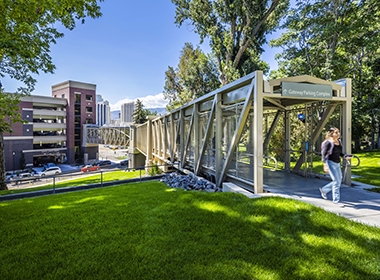 An accessible bridge to the Gateway Parking Complex offers UNR students a connection to downtown Reno.
An accessible bridge to the Gateway Parking Complex offers UNR students a connection to downtown Reno.
1. Discover New Pathways
Parking structures serve as a gateway to other destinations. As we rethink our urban spaces and look for more effective ways to connect people with their surroundings, parking plays a significant role in the solution. Downtowns adopting “park once” approaches to public parking have an opportunity to create meaningful pathways to multiple destinations. In the City of Palo Alto, the newest public parking structure on California Avenue serves both the local business district and the new Public Safety Building. To cater to both destinations, a grand staircase guides users to a pedestrian-friendly streetscape with planter boxes and benches.
In addition to the excellent views, the University of Nevada, Reno’s Gateway Parking Complex creates a pathway that previously didn’t exist: a connection to downtown. Students are now able to travel across an accessible pedestrian bridge that provides safe passage over a busy street and navigates elevation changes between the main campus and the downtown area via the stair and elevator cores.
Private developers are also working with municipalities to provide more public parking, in some cases joining forces to provide access to a public amenity. In the city of Burlingame, new development is transforming underutilized waterfront at the heart of the San Francisco Bay. However, this area is also home to the Bay Trail, a valuable public amenity. Therefore, developments such as Peninsula Crossing are working with the City to not only enhance the Bay Trail, but also provide public parking within the planned parking structures to ensure greater accessibility.
2. Experience Local Culture
Public art presents an opportunity for communities to transform parking structures from the utilitarian to an expression of place. It is an opportunity to celebrate a location’s identity or a university’s school spirit, perhaps spotlight a local artist or simply use the façade of a parking structure as a canvas to inspire.
Local culture was forefront of mind for the cities along the LA Metro Gold Line Foothill Extension constructed through Arcadia, Monrovia, Irwindale and Azusa. Each city used public art to express its unique history at their respective station and parking structure, effectively introducing themselves to visitors at the moment of both their arrival and departure. Phase 2B of the Gold Line extension, now under construction, will also feature public art in the same vein.
Similarly, the LA Plaza Village is located mere steps away from the birthplace of Los Angeles, the historic El Pueblo neighborhood. To celebrate this, four renowned Mexican American artists were selected to create a “mural corridor” through the project that celebrates the Latino history of the area. One of the four murals adorns the entrance to the parking structure.
Parking can also be home to creative whimsey. The San Antonio Zoo builds anticipation and excitement through depictions of zoo animals on the façade of a parking structure visible from a prominent highway. A plaza outside the San Mateo County Government Center Parking Structure features an art installation of 1,000 hubcaps.

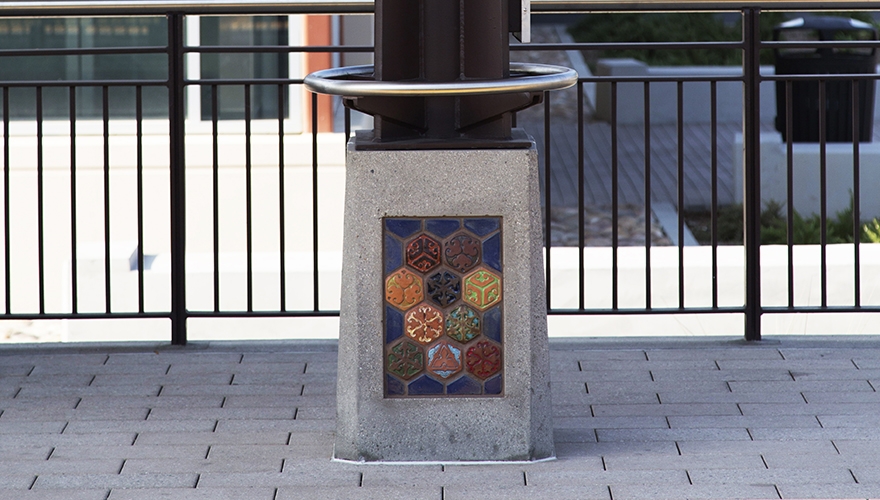
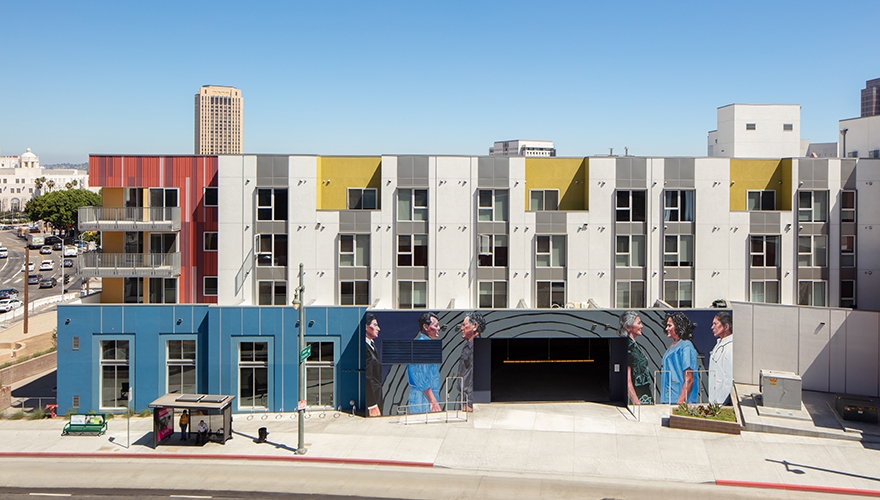
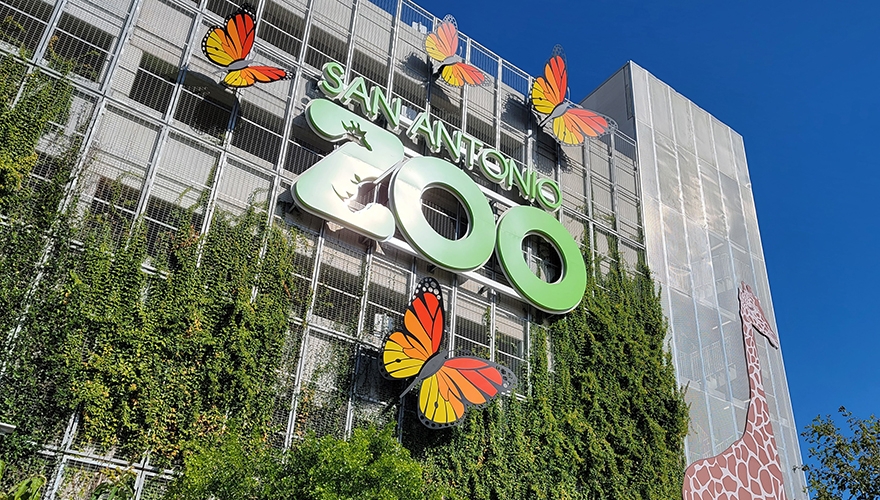
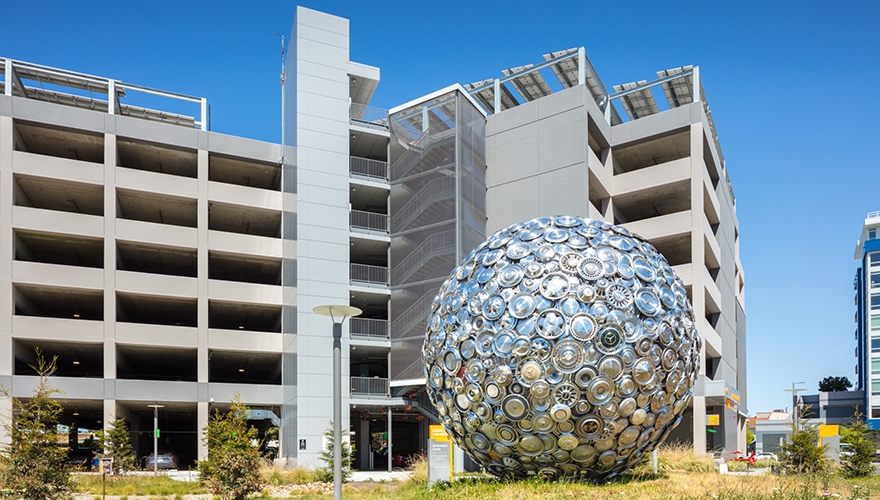
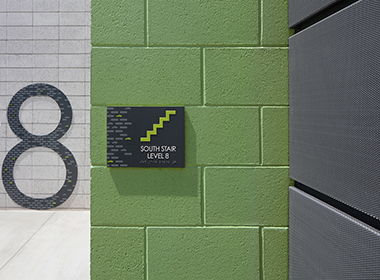 Creative details and bold colors enhance wayfinding at the Phoenix Biomedical Campus parking garage.
Creative details and bold colors enhance wayfinding at the Phoenix Biomedical Campus parking garage.
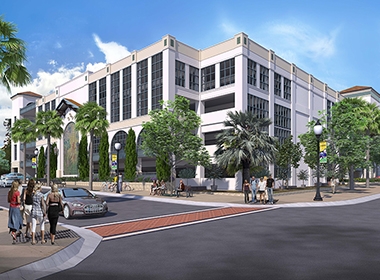 The Cultural Arts District Parking Structure in San Luis Obispo will feature a treasure trove of architectural details.
The Cultural Arts District Parking Structure in San Luis Obispo will feature a treasure trove of architectural details.
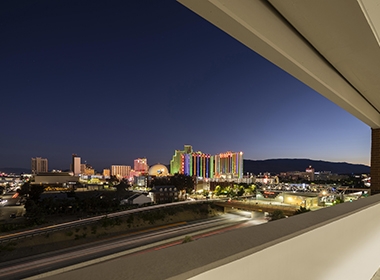 The Gateway Parking Complex at University of Nevada, Reno, offers excellent views of downtown.
The Gateway Parking Complex at University of Nevada, Reno, offers excellent views of downtown.

